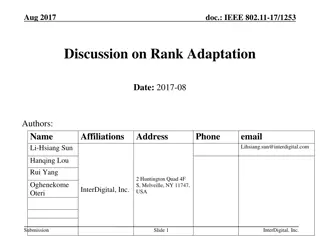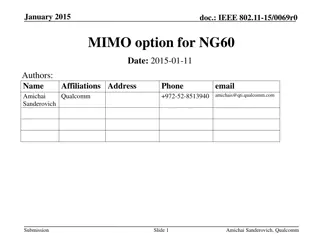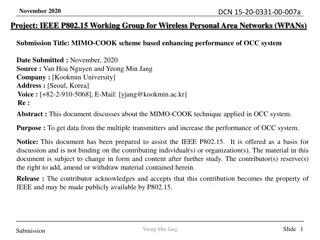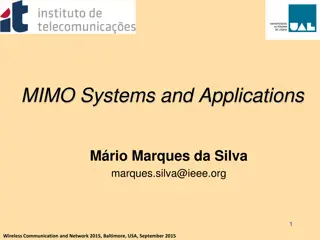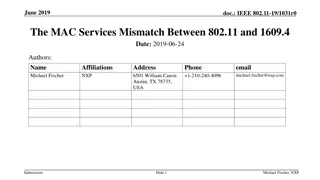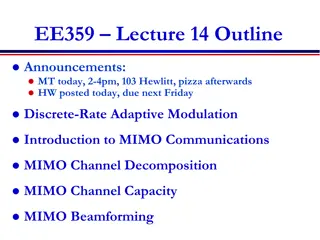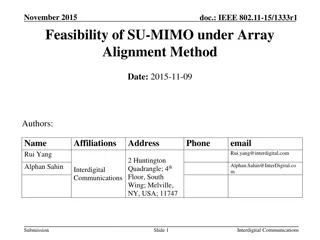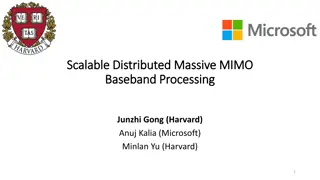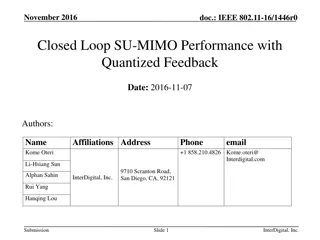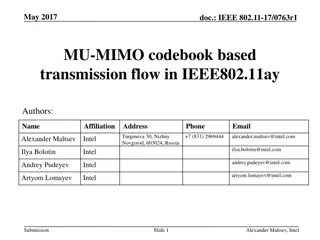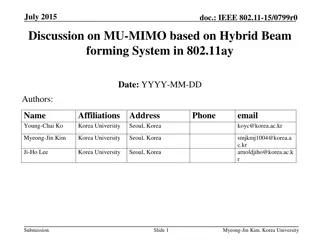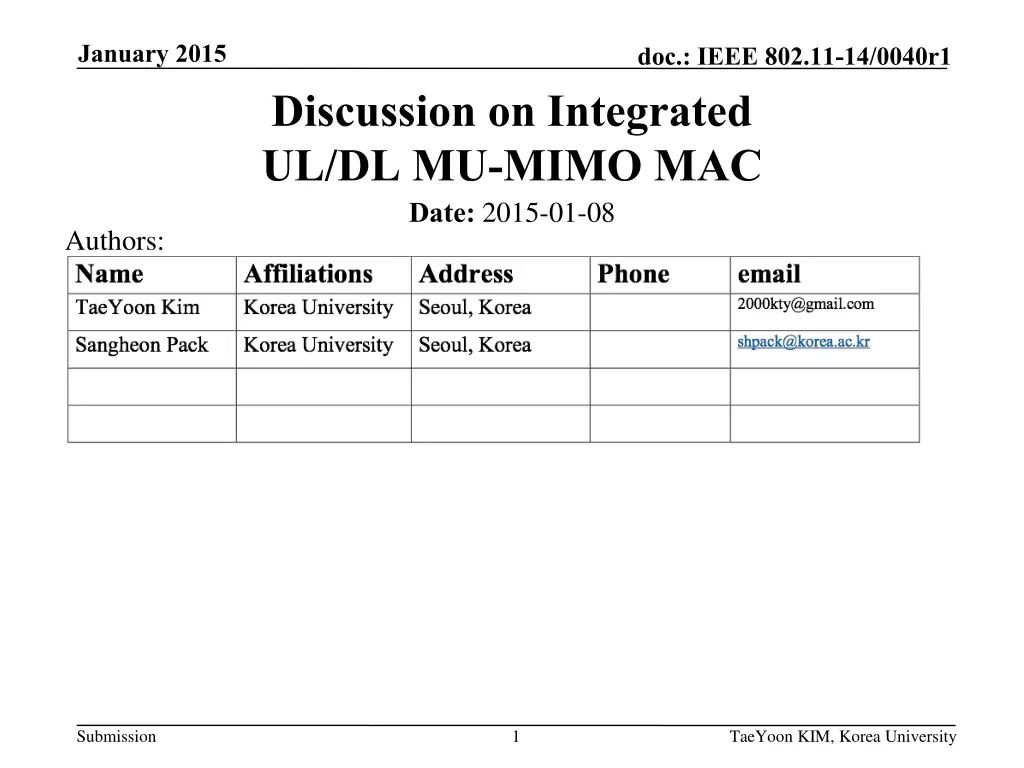
Discussion on Integrated UL/DL MU-MIMO MAC in IEEE 802.11-14/0040r1
Explore how to reduce control overheads and improve performance in the integrated structure of uplink and downlink MU-MIMO MAC as discussed in the January 2015 document for IEEE 802.11-14/0040r1 by TaeYoon KIM from Korea University.
Download Presentation

Please find below an Image/Link to download the presentation.
The content on the website is provided AS IS for your information and personal use only. It may not be sold, licensed, or shared on other websites without obtaining consent from the author. If you encounter any issues during the download, it is possible that the publisher has removed the file from their server.
You are allowed to download the files provided on this website for personal or commercial use, subject to the condition that they are used lawfully. All files are the property of their respective owners.
The content on the website is provided AS IS for your information and personal use only. It may not be sold, licensed, or shared on other websites without obtaining consent from the author.
E N D
Presentation Transcript
January 2015 doc.: IEEE 802.11-14/0040r1 Discussion on Integrated UL/DL MU-MIMO MAC Date: 2015-01-08 Authors: Submission 1 TaeYoon KIM, Korea University
January 2015 doc.: IEEE 802.11-14/0040r1 Abstract This contribution discusses on the integrated structure of uplink (UL) and downlink (DL) MU-MIMO MAC and how to reduce overheads incurred by UL/DL MU- MIMO MAC Submission 2 TaeYoon KIM, Korea University
January 2015 doc.: IEEE 802.11-14/0040r1 Background UL MU-MIMO is decided to be an option for 802.11ax in [1] A new UL MU-MIMO MAC needs to be devised, which should be well-integrated with DL MU-MIMO MAC In addition, significant overhead incurred by control messages in the integrated UL/DL MU-MIMO MAC should be mitigated to improve the overall performance Submission 3 TaeYoon KIM, Korea University
January 2015 doc.: IEEE 802.11-14/0040r1 Integrated UL/DL MU-MIMO MAC (1/2) Unified MAC structure Uplink phase Downlink phase No separation of uplink and downlink phases (i.e., legacy IEEE 802.11 MAC style) If AP wins the contention, a downlink phase starts If stations win the contention, an uplink phase starts Submission 4 TaeYoon KIM, Korea University
January 2015 doc.: IEEE 802.11-14/0040r1 Integrated UL/DL MU-MIMO MAC (2/2) Divided MAC structure Separation of DL and UL phases Transmission from and to station can be scheduled in turn, i.e., DL phase + UL phase Submission 5 TaeYoon KIM, Korea University
January 2015 Issues in Integrated UL/DL MU-MIMO MAC doc.: IEEE 802.11-14/0040r1 In unified MAC structure Backoff priorities for AP and stations should be considered to solve fairness issues in uplink and downlink transmissions In both unified and divided MAC structures Significant overhead owing to frequent control messages (RTS/CTS) and IFSs [2] Submission 6 TaeYoon KIM, Korea University
January 2015 Issues in Integrated UL/DL MU-MIMO MAC doc.: IEEE 802.11-14/0040r1 How to reduce control overheads Remove unnecessary CTS frames e.g., repeated CTS frames from AP at UL control phase Remove unnecessary RTS frames (for divided MAC structure) Merge RTS and CTS functionalities for stations with uplink data (e.g., node 1 s CSI can be fed back to AP without RTS frame using CTS of DL control phase) Submission 7 TaeYoon KIM, Korea University
January 2015 doc.: IEEE 802.11-14/0040r1 Conclusion We considered two structures for integrated UL / DL MU-MIMO MAC Unified MAC structure Divided MAC structure We also identified control overhead in integrated UL / DL MU-MIMO MAC More studies are needed to mitigated the control overhead Submission 8 TaeYoon KIM, Korea University
January 2015 doc.: IEEE 802.11-14/0040r1 References [1] 11-14/1453, ax-spec-framework-proposal [2] 11-14/1431r1, issues on ul-ofdma Submission 9 TaeYoon KIM, Korea University






